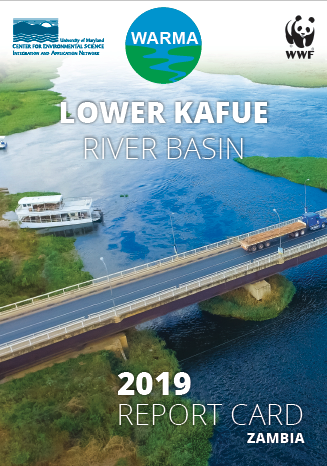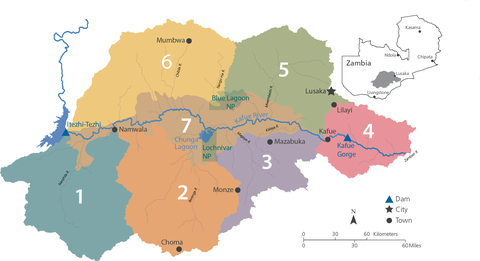Celebrating World Rivers Day with our global partners
Annie Carew ·September 25 was World Rivers Day, a global celebration of the world's rivers started by the United Nations. Rivers around the world perform vital functions for the landscapes they flow through. Fresh water is necessary for all life, and the things that live and grow in the river are a source of food for animals and people alike.

A key river in southern Africa is the Kafue River in Zambia, which flows 979 miles and drains 60,000 square miles. More than half of Zambia's population lives in the basin and relies on this river as a source of fresh water. IAN has been working to develop a river basin report card for the Lower Kafue River Basin in partnership with World Wildlife Fund (WWF) Zambia and a host of local partners. Last Friday, in celebration of World Rivers Day, the Lower Kafue Basin Report Card was released along with the Zambia HydroATLAS. The Lower Kafue River Basin received a score of 49, which is a C, indicating that the basin is in moderate health.
Our report card process is centered around co-creating the assessment with stakeholders. For the Lower Kafue River Basin Report Card, stakeholders representing organizations across the watershed collaborated to compile a list of indicators. The indicators were grouped into six categories: Water Quality & Quantity, Human Health & Nutrition, Management & Governance, Landscapes and Ecology, Economy, and Society & Culture. Indicators within these categories represent the most important values in the basin as well as the threats to those values, as selected in a consensus process with diverse stakeholders. The watershed itself was subdivided into seven subregions, based on sub-watershed classifications. Each region was scored separately, and the scores were averaged together to produce the final score, a C (49).

We have worked with partners and communities around the world to create ecosystem report cards for river ecosystems, including the Tuul River in Mongolia, the Verde River in Arizona, and the Orinoco River in Colombia. Each of these rivers is beautiful, unique, and essential to the landscapes they flow through. We understand the importance of rivers. The best way to maintain our rivers is to keep track of how they're doing, so that we can continue celebrating them for years to come.
About the author
Annie Carew

Annie Carew graduated from UMCES with a Master's degree in 2019. Her thesis research examined the effects of genetic identity on aquatic plant restoration success. Annie's research interests include coastal management and climate adaptation. At IAN she works on workshop facilitation, data visualization, document design, data analysis, and social media management. She is an enthuiastic birder and botanist, and can often be found wandering in the woods on the weekends.